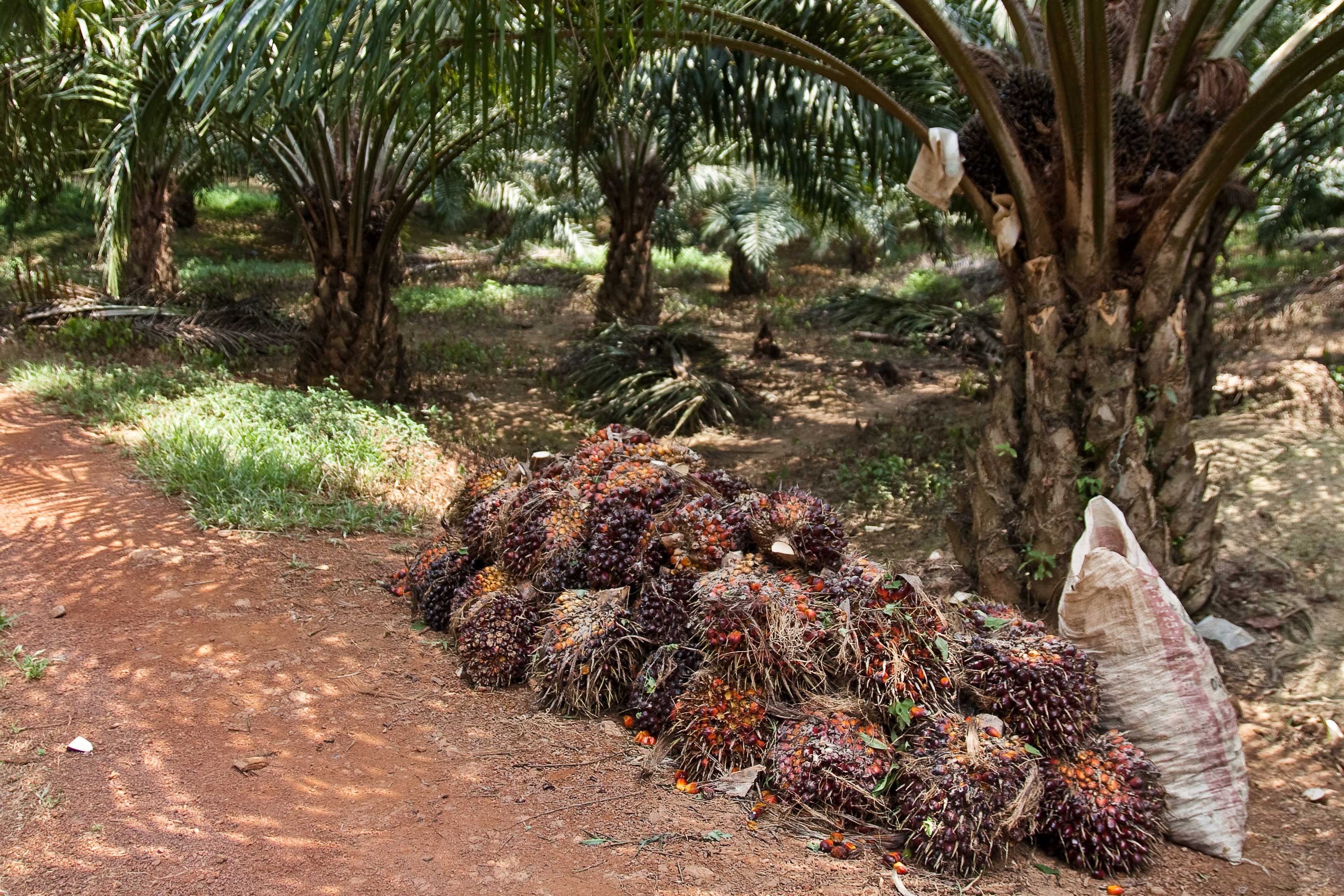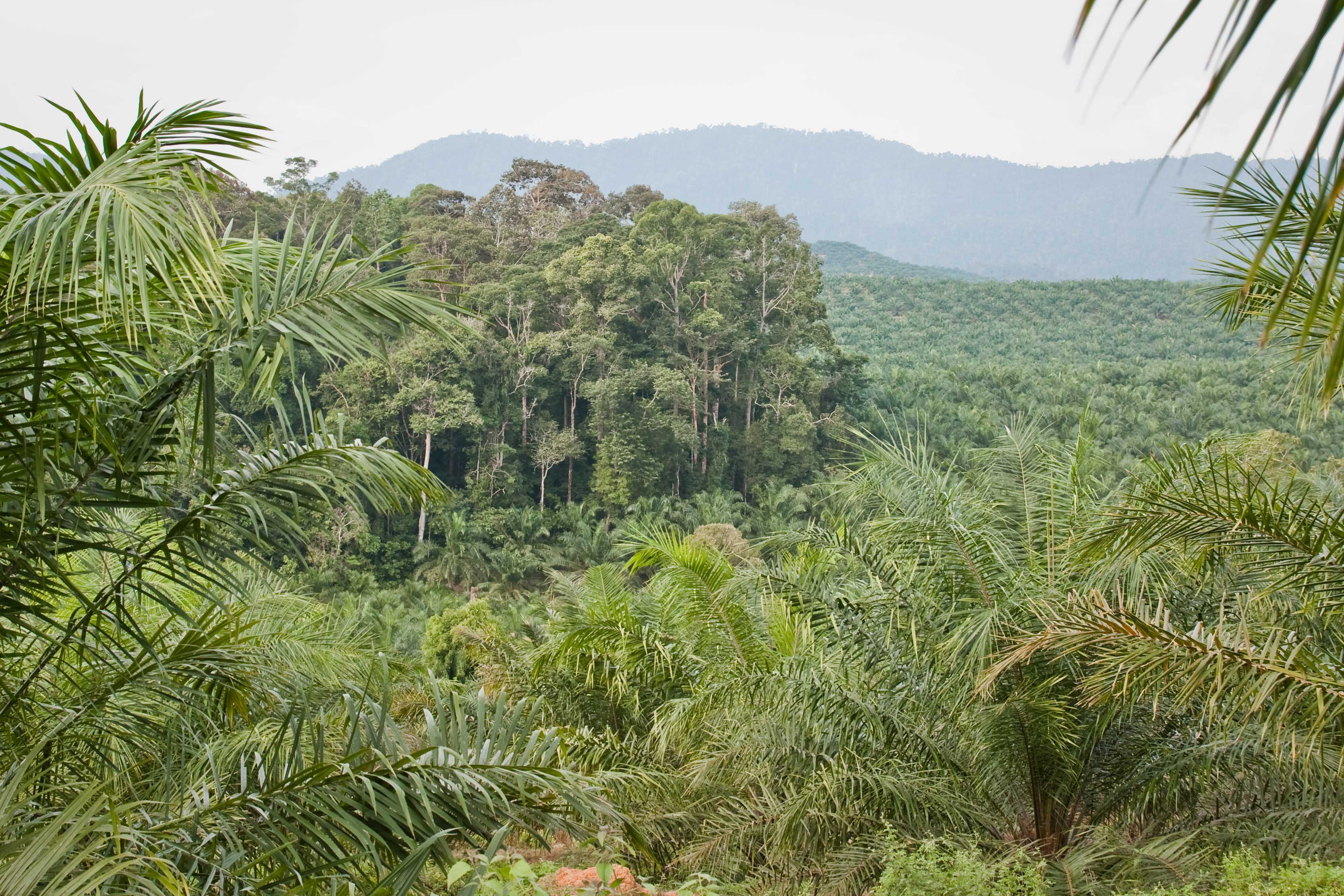Increased demand for palm oil has caused widespread deforestation and biodiversity loss in Southeast Asia. However, a new study by CNR researchers demonstrates that the impacts of oil palm expansion on forests is much worse than previously thought. Wildlife feeding on oil palm fruit can become over-abundant and subsequently cause chronic degradation to remaining nearby forests.

Animals like monkeys and pigs, which feed on the oil-rich fruit produced by oil palm, can become overabundant and cause increased degradation in nearby forests. Image Courtesy of Matthew Luskin.
In a study lasting more than two decades, an international team of scientists working in tropical forests in Peninsular Malaysia observed immense shifts in the tree community. “We knew that forest understory was dying, but we didn’t understand why,” said Matthew Luskin, lead author of the study and an alumnus of the Department of Environmental Science, Policy, and Management (ESPM). “Once we started looking outside the forest to the surrounding oil palm, the story became clear.”
Oil palm produces oil-rich fruit which can be found in a wide range of food and cosmetic products. However, forest animals like monkeys and pigs feed on these same fruits, allowing these animals to rapidly increase in number. The study focused on wild boars because they are well-known to farmers as crop-raiding pests.
The researchers found that the presence of oil palm fruit led to a 100-fold increase in the number of wild boar living in the adjacent forests. In addition to eating tree seeds, wild boar have destructive behaviors such as rooting up soil for food and building nests, which can disrupt tree sapling density. By comparing forest areas that were fenced to exclude wild boar, Luskin and his collaborators found that wild boar reduced the number of small trees by over 50%, raising concerns about the future health of the forests.
“What is most concerning about these findings is that the negative impacts of palm oil plantations are occurring deep within what otherwise looks like pristine forest–miles from the nearest plantation,” said Professor Matthew D. Potts, who, along with Professor Justin Brashares, is a co-author of the study, which was published today in the journal Nature Communications.
Oil palm growers, and the countries and regulatory bodies that govern them, must now seriously think about the conservation implications of their actions off-farm in the surrounding landscape. Mitigating these longer-term larger-scale impacts will be imperative to conservation in the region.

The border of the Pasoh Forest Reserve, adjacent to an oil palm plantation. Image courtesy of Matthew Luskin.
“Even protected areas are not safe from oil palm,” said Luskin.
One option, he noted, is for the Roundtable for Sustainable Palm Oil (RSPO) to work with ecologists to co-develop oil palm and conservation plans. To limit negative impacts, the researchers also suggest forest reserves may need to be larger and surrounded by “buffer” areas to limit wildlife access to palm fruits. An undesirable alternative is lethal management of wild boars, but the scientists warn that this could lead to endangered species also being killed. Hunting is also labour intensive and undesirable for the majority of the local population which religion discourages interaction with pigs.
The researchers lastly cautioned that if action is not taken, oil palm may disrupt the ecology and compromise forests throughout much of Southeast Asia’s remaining forested lowlands since most of these are near to oil palm plantations. More broadly, the study is a warning call that even well-protected forest reserves may be insufficient to conserve tropical biodiversity in the face of ongoing agricultural expansion without proper management.
Media contacts:
- Dr. Matthew S. Luskin (luskin@berkeley.edu)
- Dr. Justin S. Brashares (brashares@berkeley.edu)
- Dr. Matthew D. Potts (mdpotts@berekeley.edu)
